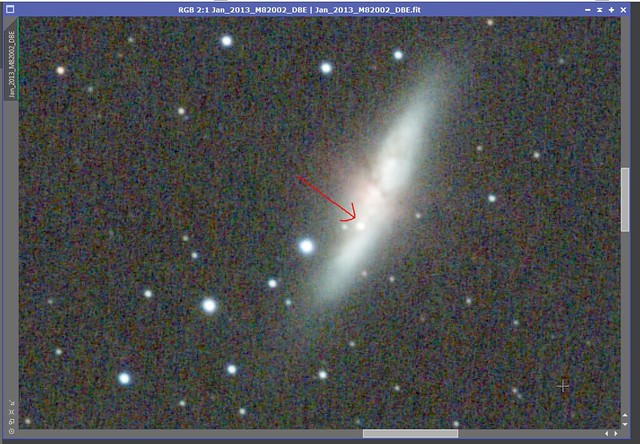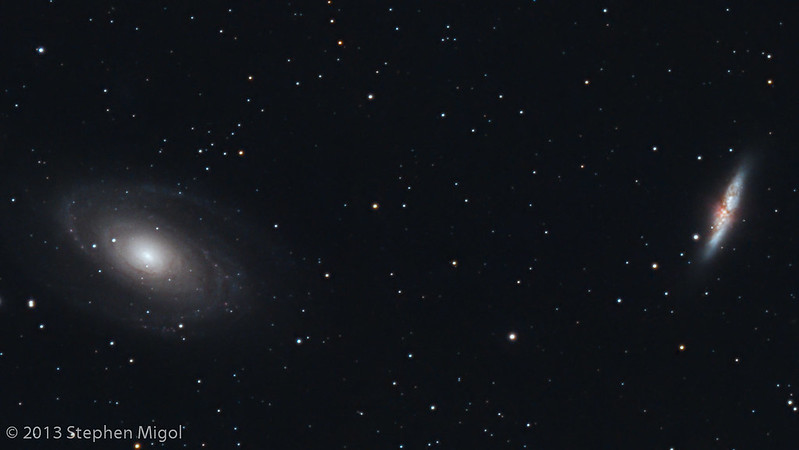Been a while since I shot any star stuff - last time I did serious astrophotos was back in October when I shot a bunch of film at a star party and did a little digital work at the same time. I haven't done anything with the film scans yet as the files are prohibitively large and I may rescan them at a lower resolution.
About two weeks ago a supernova was observed appearing in M82, an irregular galaxy that is very close to our Milky Way. This is an important event and like all supernovas of this kind, it gathers a lot of attention. I was no different and promptly set up my gear and got some pictures of the exploding star.

This picture is the sum of 40 subexposures, stacked to increase signal to noise and processed. The camera is a modified Pentax K10D that was converted to full spectrum and cooled with a peltier device.
Not sure what star is the exploding one? Here's the pointer:

To compare, here's an image taken about a year prior that does not display the exploding star:



 Similar Threads
Similar Threads 










.jpg)






 Post #1208 by mikeSF
Post #1208 by mikeSF








